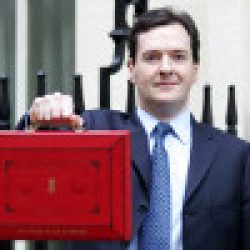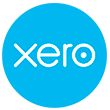Following George Osborne’s eighth Budget announcements on 17th March 2016, we have outlined some of the key points below. Whilst we have some information on these announcements, the detailed provisions will be published on 24th March 2016 in the Finance Bill 2016.
Personal Taxation
- The tax-free personal allowance (the amount of income you can earn before you start paying Income Tax) is to rise from £11,000 in April 2016 to £11,500 in April 2017.
- Capital Gains Tax cut from 28% to 20% and from 18% to 10% from April 2016 – but there will be an 8% surcharge on residential property sales.
- The point at which you pay the higher rate of Income Tax (40%) will increase from £42,385 to £43,000 in 2016 and to £45,000 in April 2017.
- Class 2 National Insurance contributions to be abolished from 2018, which the Government say gives a tax cut of more than £130 to three million self-employed workers from 2018. It is likely that a reform of Class 4 NIC will include a 3% rate rise.
- From April 2018 employers will need to pay National Insurance contributions on pay-offs (for example, termination payments) above £30,000, where Income Tax is also due.
- Insurance Premium Tax is set to rise from 9.5% to 10%.
- A crackdown on “off-payroll” workers in the public sector, which will be incumbent upon employers to be responsible for applying the tax rules, rather than HMRC. A consultation on the details will be announced in the coming weeks.
Pensions and Savings
- From April 2017, any adult over 18 and under 40 will be able to open a new Lifetime ISA. Up to £4,000 can be saved each year with savers receiving a 25% bonus from the Government on this money.
- Money put into this account can be saved until you are over 60 and either used as retirement income, or withdrawn to help buy your first home worth up to £450,000.
- The total amount you can save each year into all ISAs will be increased from £15,240 to £20,000 from April 2017.
Business
- The main rate of Corporation Tax has already been cut from 28% in 2010 to 20%, the lowest in the G20. It will be cut again to 17% in 2020, benefitting over one million businesses.
- Loans to participators to be taxed at 32.5% instead of 25% from April 2016 to bring it in line with the new dividend tax regime.
- From April 2017, there will be two new tax free £1,000 allowances – one for selling goods or providing services, and one income from property you own.
- From April 2017, small businesses that occupy property with a rateable value of £12,000 or less will pay no business rates. Currently, this 100% relief is available if you are a business that occupies a property (e.g. a shop or office) with a value of £6,000 or less. There will be a tapered rate of relief on properties worth up to £15,000. This means that 600,000 businesses will pay no rates.
- From midnight on 17th March 2016 Commercial Stamp Duty will be banded at 0% up to £150,000, 2% above that to £250,000, and then 5% on any amount above that.
- Anti-tax avoidance and evasion measures to raise £12bn by 2020.
Alcohol, tobacco, and fuel
- Fuel duty frozen again.
- Beer, cider, and spirits duties to be frozen.
- Inflation rise in duties on wine and other alcohol.
- Excise duties on tobacco to rise by 2% above inflation.
Health and Education
- By the end of 2020 every primary and secondary school in England will become an academy.
- 25% of secondary schools will be able to opt in to a longer school day from September 2017 so that they can offer a wider range of activities for pupils. There will be up to £285 million available a year to pay for this.
- A new sugar tax on the soft drinks industry to be introduced from 2018, raising £520m a year to be spent on doubling funding for primary school sport in England. Levy to be calculated on levels of sugar in sweetened drinks produced and imported, based on two bands. Pure fruit juice and milk-based drinks to be excluded and small supplies will be exempt. This will be used to double the primary PE and sport premium to £320 million a year.
Use the following link to see the bands of taxable income and corresponding tax rates for 2016-2017:
If you have any queries on any of the above, please call us.
Further Information can be at:
https://www.gov.uk/government/news/budget-2016-some-of-the-things-weve-announced
Picture from the Guardian






